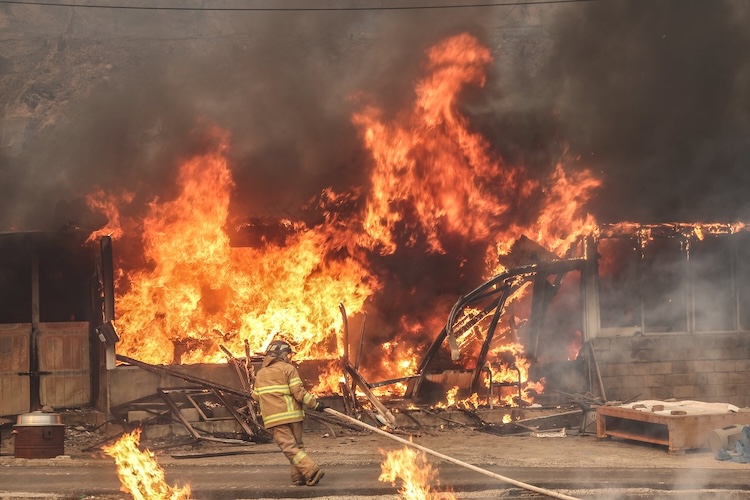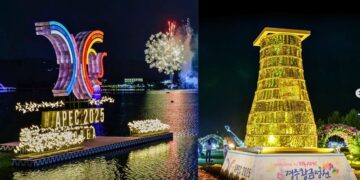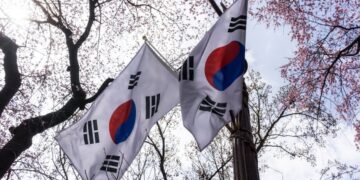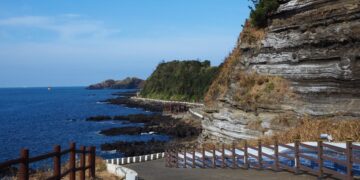Last Updated on 8 months by admin
Discover the impact of recent wildfires in South Korea on Andong’s cultural landmarks and its vibrant tourism industry.
Wildfires are rapidly spreading across the southeastern town of Uiseong, North Gyeongsang Province in South Korea and it has a significant impact on several UNESCO World Heritage sites nearby. As of March 26, the fire has damaged more than 300 structures and also has claimed 24 lives.
Andong – A cultural hub
Andong is renowned for its rich cultural heritage, housing several significant landmarks that have attracted tourists worldwide. Andong, often hailed as the cradle of traditional Korean culture, stands as a testament to the nation’s rich historical tapestry. Nestled in the southeastern part of South Korea, this city is a living museum, preserving the essence of the Joseon Dynasty and offering visitors an immersive journey into the past.
Andong’s cultural landscape extends to the Andong Folk Festival, held annually in mid-October. This event celebrates the region’s rich traditions, featuring folk dances, music, and art forms that have been passed down through generations.
The city’s commitment to preserving its heritage is evident in its numerous museums and cultural institutions. With over 22 museums dedicated to natural history, traditional culture, and digital exhibitions, Andong attracts approximately two million tourists annually.
Impact on cultural sites
The recent wildfires have threatened and, in some cases, devastated these sites. So, if you’ve been to Andong recently, your next visit might be very different.
Gounsa Temple
Gounsa in Uiseong County is a significant Buddhist temple established in A.D. 681 during the Silla Dynasty (57 B.C. to A.D. 935). The wildfires are devastating, destroying nearly half of the over 30 structures, including the Gaunru Pavilion and Yeonsujeon Hall, which are both national treasures.
The Gaunru pavilion was built in 1668 across a mountain stream, famous for its architectural style that flourished during the mid-to-late Joseon era. Yeonsujeon, celebrated for its well-preserved murals and traditional decorative paintings, was initially constructed to honor the royal family. Both temples held state-designated treasures.
Notably, the temple’s 9th-century Stone Seated Buddha of Gounsa, also a treasure, was saved and relocated to the Andong Youth Cultural Center.
Hahoe Folk Village
This UNESCO World Heritage site is home to well-preserved traditional houses and cultural significance. While the village is sheltered by forested mountains and faces a river and open agricultural fields, it is also vulnerable. It also faced imminent danger from the approaching fires. But, authorities issued evacuation orders to protect residents and the site. They worked on it by deploying large water cannons and firefighting personnel to safeguard the village.
“It is very heartbreaking and painful to see the precious temples that are over a thousand years old being lost.”
Deung-woon, a 65-year-old monk
Byeongsan Seowon
Another UNESCO-listed Confucian academy, Byeongsan Seowon, was in danger as fires got closer. People worked hard to protect this important historical place.
1000 year old Temple consumed by wildfire
— Volcaholic 🌋 (@volcaholic1) March 23, 2025
Thousand-year-old Unramsa Temple on Cheondeungsan Mountain South Korea, was completely destroyed by a forest fire yesterday. It quickly spread due to strong winds, burning down both the main building and its outbuildings.
“Before the… pic.twitter.com/X5Bk6aTjUy
Recovery Effects
In response to the crisis, coordinated efforts have been undertaken to manage the situation and plan for recovery. Approximately 9,000 firefighters, along with over 130 helicopters, were deployed to combat the fires. Despite challenges posed by strong winds and dry conditions, these efforts aimed to contain the blazes and protect both lives and cultural assets. The South Korean government declared the affected areas as special disaster zones, facilitating the allocation of emergency funds and resources for recovery. Local communities have shown resilience, coming together to support one another and initiate rebuilding efforts.
Major South Korean corporations have pledged financial aid and resources to this effort.
- Samsung Group: Donated 3 billion won (approximately $2 million USD) to the Korean Red Cross for recovery efforts. Additionally, they provided 1,000 rescue packages and 600 tents for displaced residents.
- Hyundai Motor Group: Contributed 2 billion won and dispatched emergency support vehicles, including laundry and disinfection trucks, to assist affected communities.
- SK Group: Also donated 2 billion won, with affiliates setting up Wi-Fi and TV facilities at temporary shelters and providing portable chargers for those affected.
- LG Group: Contributed 2 billion won, supplying air purifiers, home appliances, and personal care products to temporary shelters.
- Lotte Group: Donated 1 billion won, along with daily necessities and processed food products.
- Shinsegae Group: Provided 500 million won, as well as daily necessities, sanitary goods, and clothing.

How can you support the local community?
Tourists and supporters can play a vital role in Andong’s recovery. Engaging in volunteer programs or contributing to funds dedicated to rebuilding efforts can provide much-needed support to affected communities and heritage sites. Adopting responsible tourism behaviors, such as respecting local guidelines and supporting local businesses, can aid in the region’s economic and cultural recovery.
Additionally, you can make financial contributions to reputable organizations like the Korean Red Cross, which is actively involved in relief efforts in the affected areas. Those interested in hands-on assistance can participate in organized volunteer programs focused on rebuilding and supporting displaced residents. It’s essential to coordinate with recognized organizations to ensure efforts are effective and safe. Planning future visits to Andong and engaging in cultural tourism can also provide much-needed support.
Immediate Effects and Future Implications on Tourism
The wildfires have led to significant disruptions in Andong’s tourism sector:
- Evacuations and Closures: Thousands of residents and tourists were evacuated from affected areas. There are temporary closures of major attractions, including Hahoe Folk Village and Byeongsan Seowon.
- Event Cancellations: Numerous cultural events and festivals, integral to Andong’s tourism appeal, were postponed or canceled due to safety concerns and the ongoing disaster.
Despite the setbacks, The path to revitalizing Andong’s tourism industry involves several considerations:
- Perception and Safety: Ensuring the safety of tourists and restoring confidence in Andong as a travel destination is paramount. Transparent communication about recovery progress and safety measures will be essential.
- Promotional Strategies: Highlighting the resilience of cultural sites, promoting areas unaffected by the fires, and showcasing restoration efforts can help attract visitors back to the region.
The recent wildfires in Andong and its neighboring regions have inflicted profound damage on both the community and its cherished cultural landmarks. In these challenging times, the resilience and unity displayed by the residents, coupled with support from across the nation, illuminate a path toward recovery. As restoration efforts continue, it is imperative to honor and preserve Andong’s rich heritage. By standing together and extending our support, we can help rejuvenate this vibrant community, ensuring that Andong’s cultural legacy endures for future generations.
1,844 total views, 1 views today

















